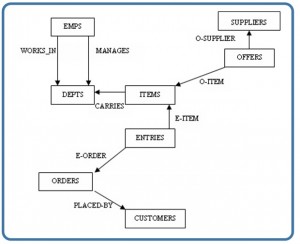CS377: Database Design - Data Modeling and Schemas
Activity Goals
The goals of this activity are:
- To identify use cases appropriate to the relational, network, and hierarchical database model
- To create database schemas in standardized formats
The Activity
Directions
Consider the activity models and answer the questions provided. First reflect on these questions on your own briefly, before discussing and comparing your thoughts with your group. Appoint one member of your group to discuss your findings with the class, and the rest of the group should help that member prepare their response. Answer each question individually from the activity on the Class Activity Questions discussion board. After class, think about the questions in the reflective prompt and respond to those individually in your notebook. Report out on areas of disagreement or items for which you and your group identified alternative approaches. Write down and report out questions you encountered along the way for group discussion.
Model 1: Network and Hierarchical Data Models
Questions
- What do edges (or vertices) represent in each model?
- Do these edges represent 1:1 or 1:many relationships?
- How might you implement each of these models using the traditional relational database model?
- Sketch a model of the student enrollment tables we made previously in the hierarchical model.
- Design tables and keys to represent the manager-employee hierarchical model.
Model 2: Database Schemas
Questions
- Draw lines between the foreign keys that you find and their primary keys. What do you notice about these lines, with respect to the clusters of tables?
- Which tables need to be modified to add a log message to the database? Do any records need to be modified elsewhere? How might you define the concept of physical data independence based on this idea?
- How might you define logical independence (independence within the schema itself), given our definition of physical independence?
Submission
Submit your answers to the questions using the Class Activity Questions discussion board. You may also respond to questions or comments made by others, or ask follow-up questions there. Answer any reflective prompt questions in the Reflective Journal section of your OneNote Classroom personal section.


